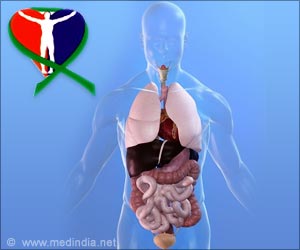A new standardized assessment provides a useful tool for tracking surgeons' progress as they develop the skills needed to perform robot-assisted microsurgery, reports a study.

"The Structured Assessment of Robotic Microsurgical Skills (SARMS) is the first validated instrument for assessing robotic microsurgical skills," according to the report by ASPS Member Surgeon Dr Jesse C. Selber of the University of Texas MD Anderson Cancer Center, Houston. Initial assessments using the SARMS show that, after a steep initial learning curve, surgical trainees display steady improvement in their ability to perform robot-assisted microsurgery tasks.
SARMS Tracks Development of Robotic Microsurgery Skills The researchers describe the development and testing of the SARMS as a standard technique for evaluating technical skills for robot-assisted microsurgery. The SARMS consisted of 11 items—six evaluating microsurgery skills and five evaluating robotic skills.
After the SARMS was validated, expert surgeons used it to grade videos of surgical trainees performing robot-assisted microvascular anastomoses—joining and suturing tiny artificial blood vessels, just three millimeters in diameter. Each of nine trainees was graded on five videos, made as they gained experience with the robotic surgical system. Changes in scores in each area were assessed, along with the time required to complete the procedure.
The SARMS scores documented general improvement in microsurgical skills with each practice session. On a five-point scale—from "novice" to "expert"—the trainees' average ratings of overall skill and performance increased from around two to around four.
"The results showed an initial steep ascent in technical skill acquisition, followed by more gradual improvement," Dr Selber and coauthors write. Across the five sessions, average operative time decreased gradually, from about 30 to 19 minutes.
Advertisement
Tool Will Aid Training in Robot-Assisted Plastic Surgery Surgical robots have emerged as a potentially valuable tool in many surgical disciplines, including plastic and reconstructive surgery. By eliminating tremor of the surgeon's hand and scaling hand motion, surgical robots are capable of "superhuman precision"—expanding the ability to perform delicate microvascular manipulations that would be all but impossible with the unaided human hand.
Advertisement
"Standardized evaluation and systematic learning of both robotic and conventional surgical techniques is necessary, and is the foundation of competency-based training, which itself is the future of surgical education," Dr Selber and coauthors conclude. Dr Selber will give a special "Tech Talk" on the topic of Robotics at "Plastic Surgery—The Meeting," the annual scientific meeting of the ASPS, to be held October 10-14, 2015 in Chicago, Ill.
Source-Eurekalert









